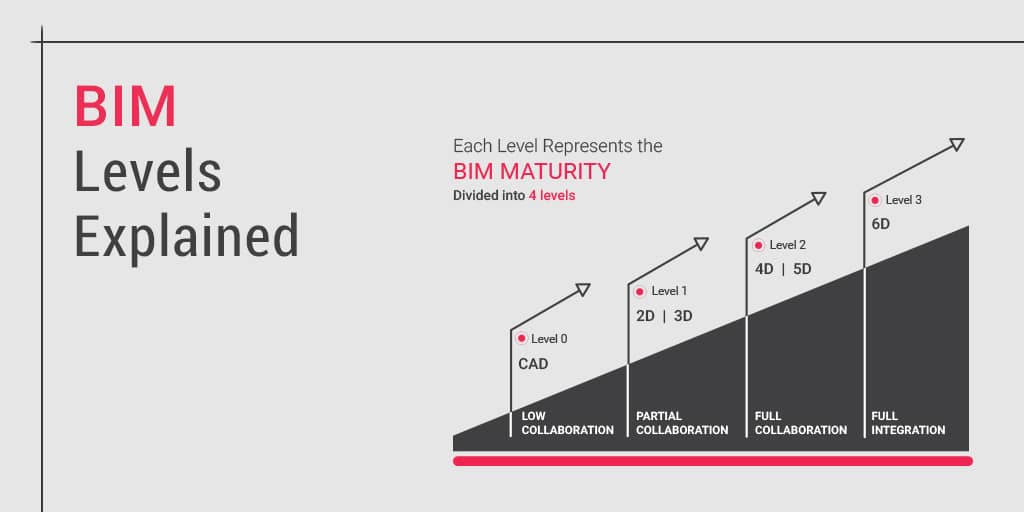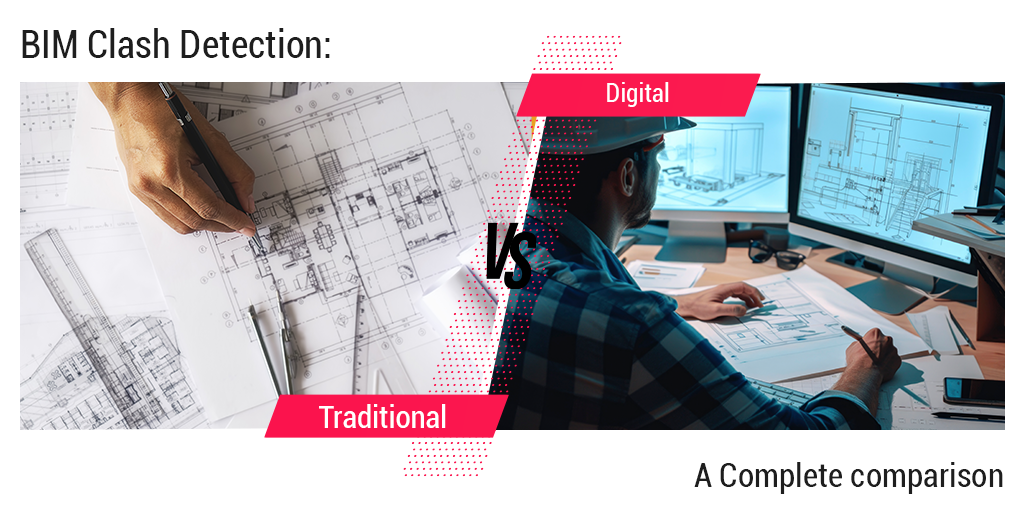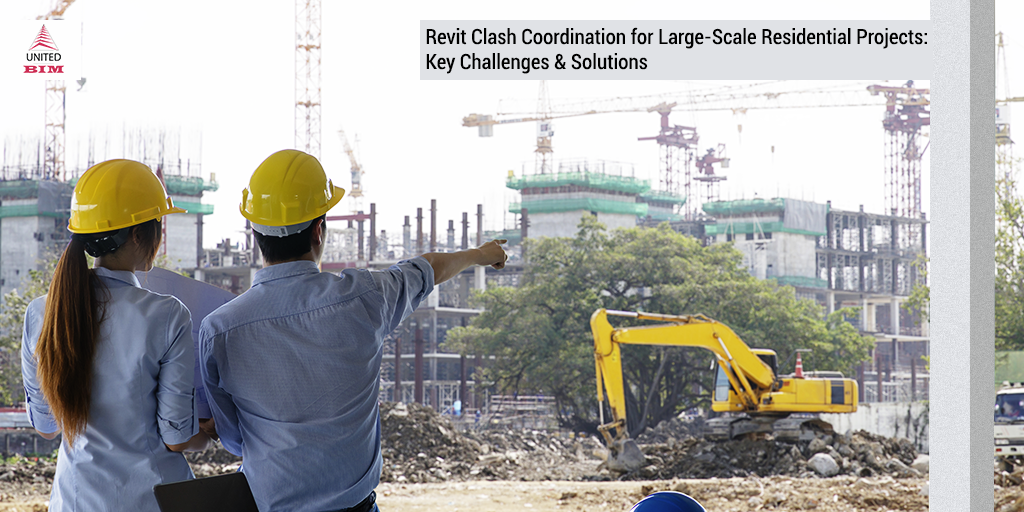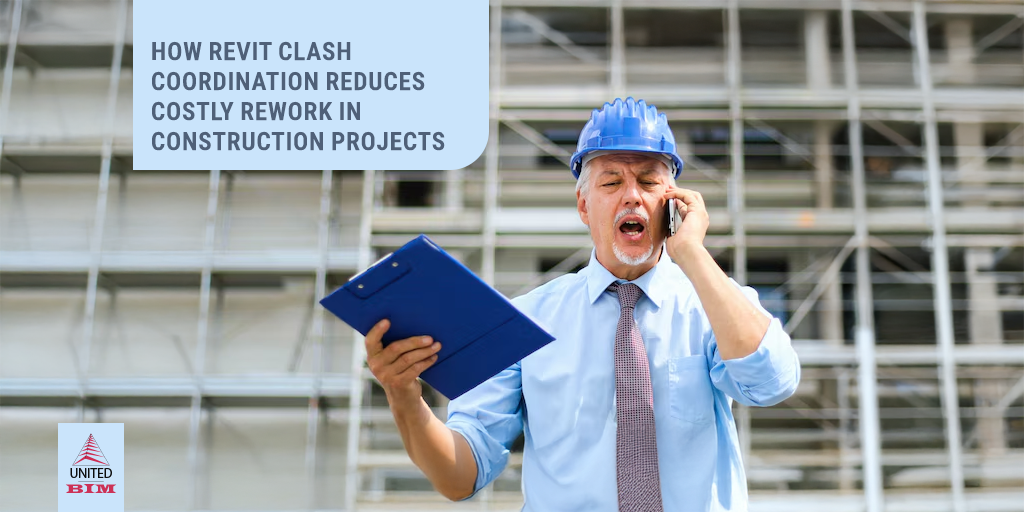Last updated on: January 24, 2025
What are the Maturity Levels in BIM?
Building Information Modeling is not a new concept in the AEC industry. In May 2011, the UK government released a futuristic construction strategy for a reduction in the cost of public sector assets. This strategy mandated construction vendors applying for government tenders to achieve BIM Level 2 to be considered. The strategy also pushed for the phased roll-out of BIM Level 3 on all centrally-procured projects by 2016.
Further, now the UK authorities mandate builders & designers to use BIM in high-rise residential projects. Read more about it in this article, BIM mandatory in UK and its implications on Builders and Designers.
BIM maturity levels define the progression of digital collaboration in construction projects. There are 4 BIM Maturity levels. Starting with Level 0 (2D CAD with no collaboration), Level 1 introduces limited collaboration using 3D CAD for design and 2D for documentation, with data shared through a Common Data Environment (CDE). Level 2 enables greater coordination, where stakeholders work on separate 3D models and exchange data in standardized formats like IFC or COBie, creating a federated model. Level 3, or Open BIM, involves real-time collaboration on a shared model stored in a centralized repository, ensuring seamless data integration and enhancing project efficiency.
The progressive and recognizable milestones are defined as different levels based on the level of collaboration promised by these milestones. These levels ranging from 0 to 3 and beyond are defined as below:
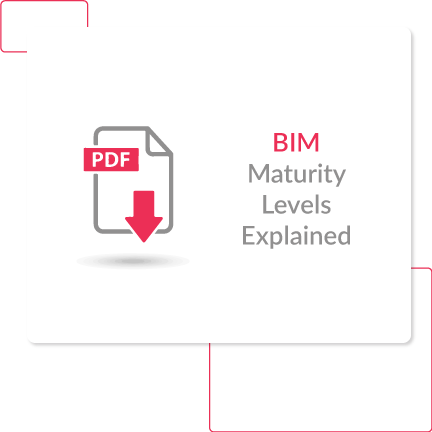
No worries. Let us send you a copy so you can read it when it’s convenient for you. Just let us know where to send it.
Levels of BIM Models Explained- Level 0, Level 1,
Level 2 & Level 3
00
Level 0 BIM
BIM Level 0 means that the project promotes zero collaboration and makes use of paper-based 2D CAD drafting techniques. The main goal is to generate Production Information in the form of paper or electronic prints. This is an obsolete level that is rarely used by industry professionals nowadays.
Get your CAD files converted to BIM. Contact Us
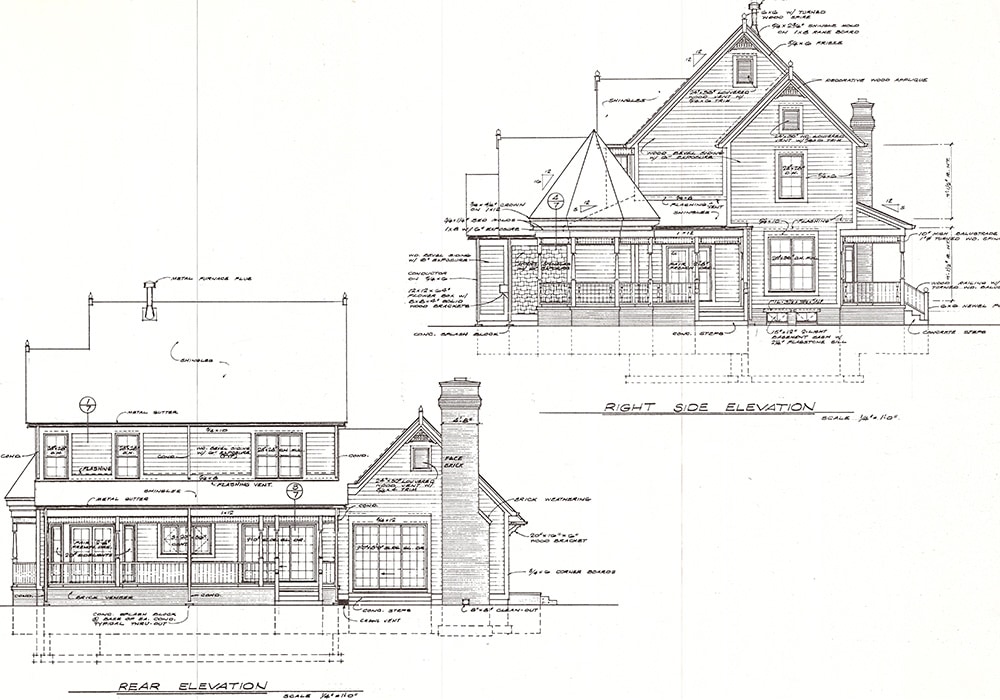
01
Level 1 BIM
BIM Level 1 BIM involves using both 3D CAD and 2D drafting. While 3D CAD is used for conceptual works, 2D is used for the generation of statutory approval documentation and Production Information. At this level, data sharing happens electronically using a common data environment (CDE) managed by the contractor. Also, the CAD standards are governed under British Standards (BS 1192:2007)
At this level, there is zero or low collaboration between the different stakeholders as everyone creates and manages their own data.
Learn More About This: What’s the Difference, Scopes and Applications Between 3D CAD, BIM and VDC?
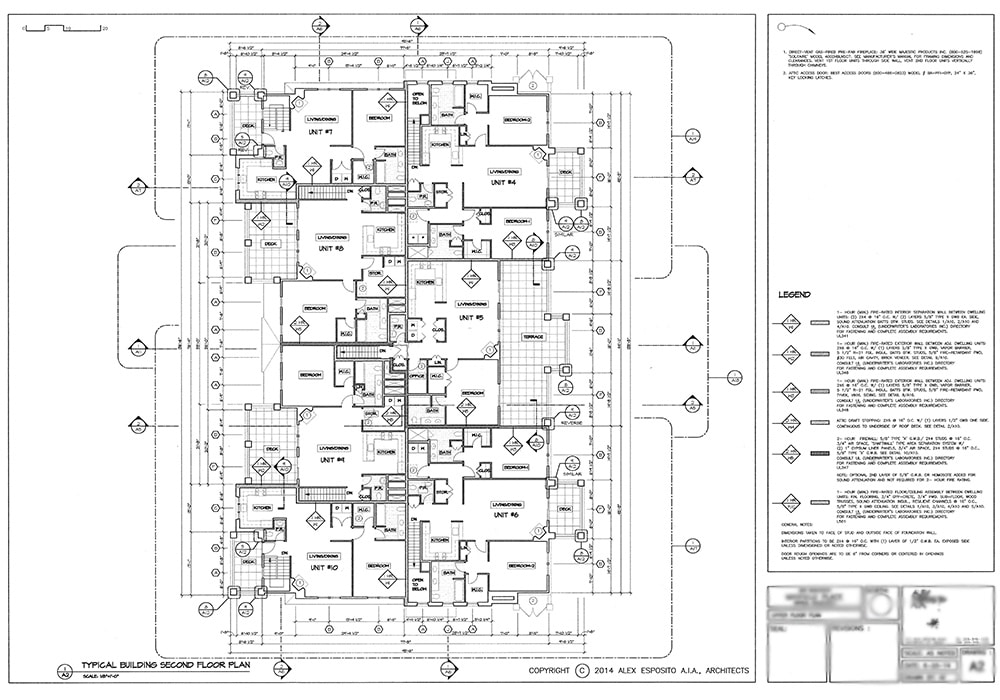
Guidelines to Achieve Level 1 BIM
For achieving Level 1 BIM, the following should be taken care of:
1. Roles and responsibilities of all stakeholders should be outlined (CIC BIM Protocol)
2. Standardized naming convention should be adopted (Uniclass 2015)
3. Creation and maintenance of project-specific codes and spatial coordination (Industry Foundation Class)
4. Adoption of Common Data Environment of Electronic Document Management System for information sharing between all teams.
5. Setting up an appropriate information hierarchy that supports CDE and document repository
02
Level 2 BIM
BIM Level 2 is prescribed by the UK Government for public sector projects. This level promotes collaborative working by giving each of the stakeholders its own 3D CAD model. Collaborative working is the distinguishing aspect of this level and BIM Level 2 requirements are, a streamlined information exchange related to a project and seamless coordination between all the systems and the stakeholders
All the parties work on their local 3D CAD models and information is exchanged through a common file format. Such a system allows organizations to combine external data with their own model to create a federated BIM Model. Explore more about BIM Exectution plan (BEP/BXP).
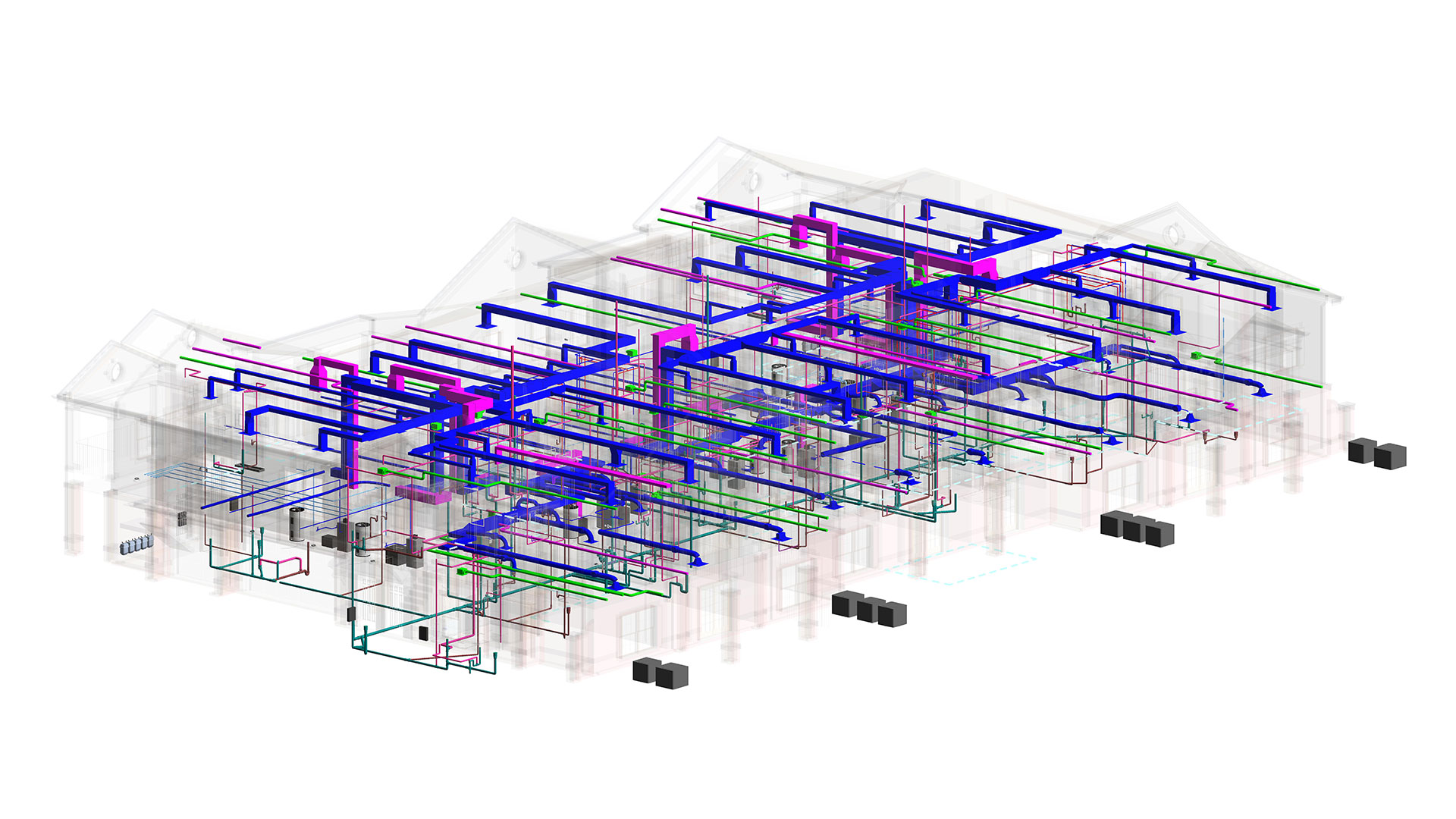
Guidelines to Achieve Level 2 BIM
For achieving level 2, it is essential for an organization to:
1. Achieve all the guidelines outlined in Level 1
2. Install CAD software that supports common file formats such as IFC or COBie
Subscribe to Our Newsletter
* We don’t share your personal info with anyone. Check out our Privacy Policy for more information.
03
Level 3 BIM
Often termed as ‘Open BIM’ the scope of Level 3 hasn’t been completely defined though it promises deeper collaboration between all stakeholders through a shared model stored in a central repository. Level 3 concept enables all the participants to work on the same model simultaneously which eliminates the chance of conflicting information.
Level 3 proposes the use of an integrated solution built around open standards like IFC where a single server stores all the project data. Though this level is slowly picking up pace, many firms in the UK are still thinking of transitioning from Level 2 to Level 3.
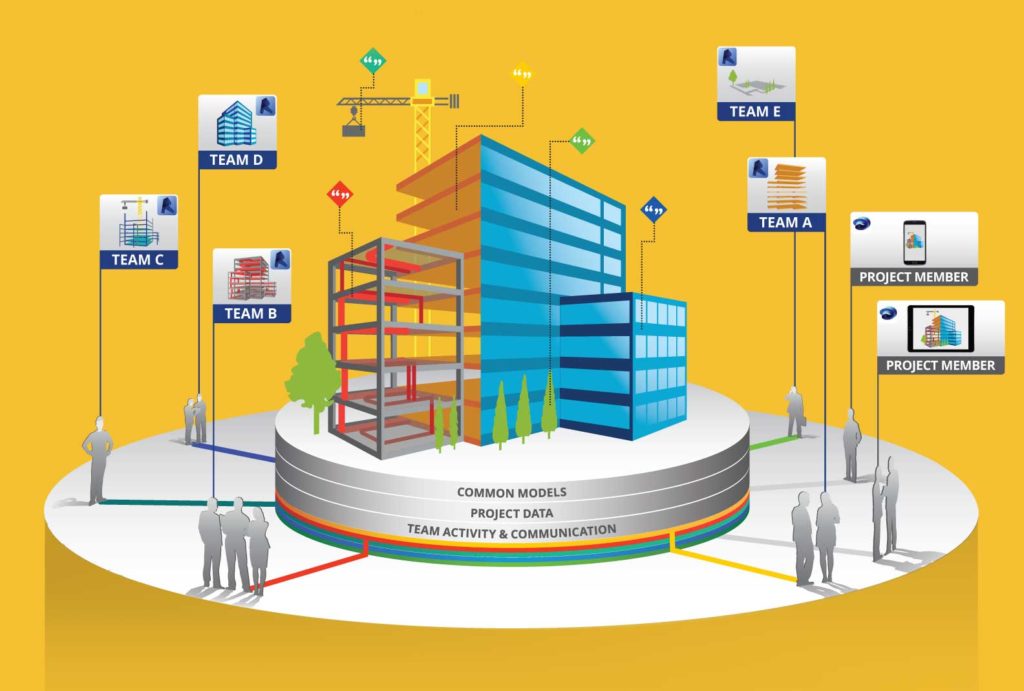
Guidelines to Achieve Level 3 BIM
The scope and vision of BIM Level 3 are defined by the UK Government in Level 3 Strategic Plan. Proper implementation and adoption of Level 3 require:
1. Development of a fresh ‘Open Data’ standard that facilitates the sharing of project data around the globe
2. Creation of new contractual frameworks for BIM-based projects for promoting collaboration and ensuring consistency
3. Training clients in the public sector to use BIM techniques
BIM Levels & Existing Industry Ecosystem
The United Kingdom’s Digital Built Britain Strategy talks highly of using Level 3 BIM for the future. Though there is a strong push by the government, the industry is slow to adapt Level 3 BIM which is in the preliminary stages. The strategy defines four phases for successful adoption of Level 3 BIM which includes:
• Level 3A: Improving the existing Level 2 model
• Level 3B: Allowing new technologies and systems
• Level 3C: Enabling development of fresh business models
• Level 3D: Capitalizing the global authority in BIM sphere
The Digital Built Britain strategy is setting the solid ground for the adoption of Level 3 & beyond in line with the government’s construction strategies like the Business and Professional Services Strategy 22, the Smart Cities Strategy 23, the Information Economy Strategy 24 and Industrial Strategy – Construction 2025.
Similar to the recent mandates in favor of BIM by the UK government, fresh measures will pave the perfect adoption path towards greater levels. Also, the private sector is looking to propagate the collaborative work theory which will eventually impact the public AEC industry too. The transition will be similar to the transition from paper-based models to CAD during the 1990s.
Wrapping Up
More advanced the level, greater the level of collaboration. At United BIM, we believe in disrupting the set standards associated with BIM. In a bid to revolutionize the industry, we take the necessary steps to achieve the highest BIM level. If you are interested to explore the advantages of BIM levels or leverage the same for your next project, get in touch with our experts now. Contact Us for BIM Services
Level 2 BIM is characterized by collaborative working, where data is shared across different teams, typically through a common file format. Level 3 BIM involves full integration with a single, centralized model, allowing for real-time collaboration and cloud-based management.
While Level 3 BIM is considered the highest recognized maturity level, some suggest potential developments into a Level 4 BIM that could include more advanced digital technologies like artificial intelligence.
A BIM Execution Plan (BEP) outlines the implementation and management of BIM processes for a project and should align with the organization's BIM maturity level, guiding collaboration and data management.
The private sector often adopts BIM maturity at a more flexible pace, driven by project-specific needs, while the public sector tends to implement BIM maturity levels more systematically and through mandates or regulations for transparency and efficiency.
Level 0 is unmanaged CAD, Level 1 is managed 2D or 3D CAD with some collaboration, Level 2 involves collaborative working with shared 3D models, and Level 3 integrates all processes and data into one fully collaborative and interoperable system.
About the Author

Coordination Manager / VDC Manager at United BIM
With over 10 years of experience in the AEC industry, Akash Patel is a seasoned Coordination Manager and VDC Manager at United BIM. His expertise lies in managing complex MEP-FP coordination projects and leveraging cutting-edge BIM technology to ensure seamless collaboration and precision. Akash is dedicated to delivering high-quality, detailed models that meet the demands of modern construction. He is passionate about optimizing workflows and driving innovation within the BIM field.
